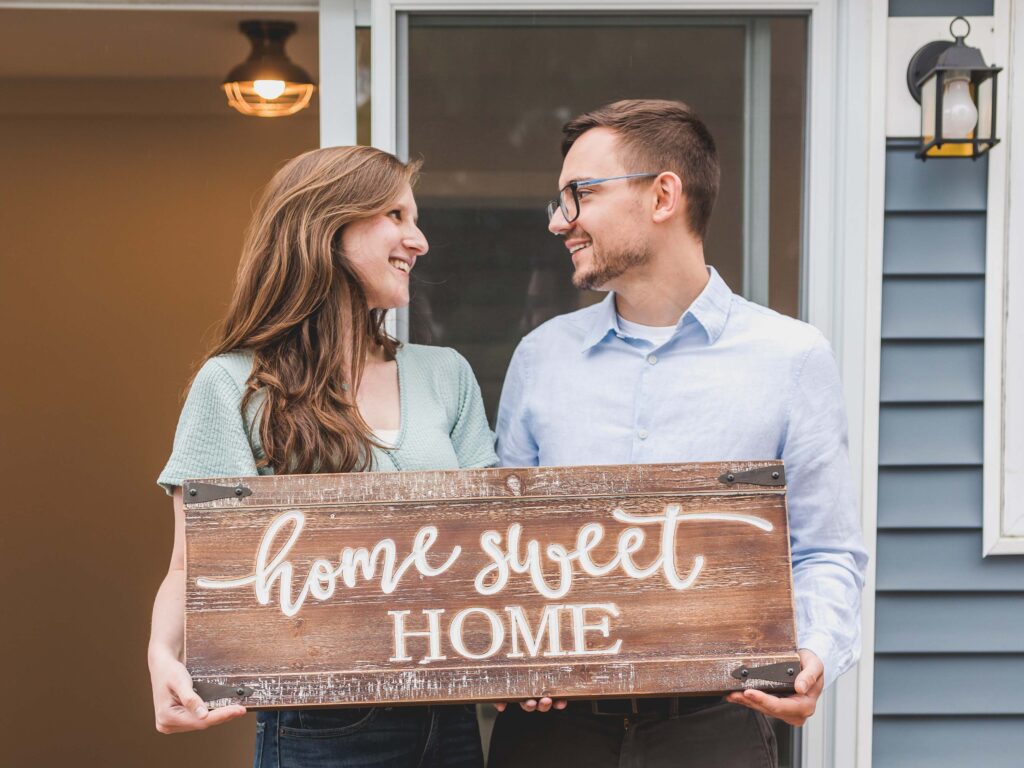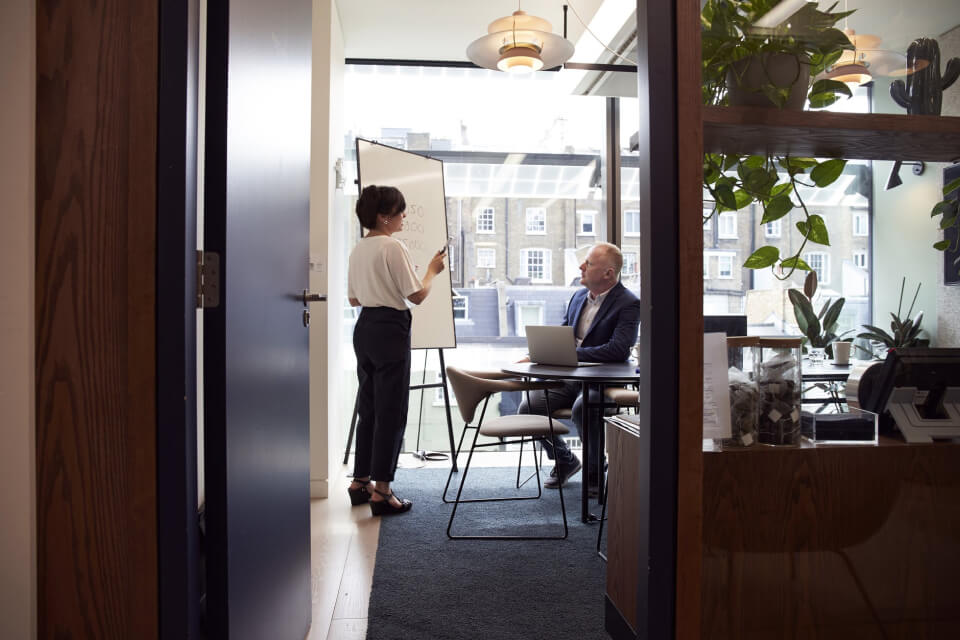First-time buyers need to earn an extra £7.5K to step on the property ladder
The rapid rise in house prices over the last three years means first-time buyers now need to earn more to buy a home. Let’s look at the options.
-
Rising rents and a shortage of rental properties are pushing more renters to become first-time buyers
-
In 2023, first-time buyers need to earn a household income of £55,900 to buy a 3-bed home, or £51,000 to buy a 2-bed home
-
There are options available for first-time buyers, including saving for larger deposits, extending the mortgage term or looking for more affordable housing in less expensive areas
Higher mortgage rates have a major impact on first-time buyers.
But many first-time buyers come from the rental market, where there have been steep increases in rental costs over the last year, with rents up £1,120.
This, combined with a chronic shortage of supply, which is currently down by a third, is now pushing more first-time buyers towards home ownership.
In fact in 2022, first-time buyers have proven to be highly resilient. We estimate that first-time buyers using a mortgage accounted for over 1 in 3 sales last year (34%).
This made them the largest group of home buyers, followed by existing owners using a mortgage (31%) and cash buyers (25%).
How much money do first-time buyers need?
First-time buyers now need to earn nearly £7.5K more to buy a home than they did in 2020.
That means you’ll need to earn a household income of £55,900 for a 3 bed home, or £51,000 for a 2 bed home (an increase of £4,900) .
In London and the South East, the income needed to buy a home has now increased by over £12,000 to buy a 3-bed home and £7,300 to buy a 2-bed home.
Yet wages have only risen by £4,800 since 2020, according to the Office for National Statistics.
The average amount needed for a house deposit has also risen.
For the average three-bed home costing £230,000, a first-time buyer would need to have a deposit of £34,500 (an increase of nearly £5,000).
For a two-bed home costing £210,000, you would need a deposit of £31,500 (an increase of £3,000).
Traditionally, 3-bed houses have been the most popular choice for first-time buyers, but we are seeing clear evidence of first-time buyers seeking better value for money with one and two-bed flats.
The ability to work from home has also enabled first-time buyers to look further afield to secure the home they need at the right price.
What help is there to get on the ladder as a first-time buyer?
1: Save for a larger deposit
One option is to try and save for a larger deposit, which may be challenging when rental costs are taking up a larger portion of people’s earnings.
2: Borrow from a relative
Borrowing from the a relative if that’s a possibility, this can work out better for first time buyers as they may not have to pay interest on any loan or help with their deposit.
3: Look to buy a more affordable home
We’re seeing that some first-time buyers are looking to purchase cheaper and lower-cost homes.
Lower mortgage rates in recent years have enabled first-time buyers to purchase larger, typically 3-bed homes.
But higher mortgage rates and prices are now pushing some to adjust their requirements, particularly in the areas where prices have increased the most since 2020.
Three-bed homes are still the most in-demand property type but buyer interest has fallen back to 40% in Q1 2023, while demand for 1 and 2-bed flats increases.
Outside of London, the average asking price for a 2-bed flat (£200,000) is 29% lower than a 3-bed house (£280,000).
4: Take out a longer term mortgage
Finally, you might consider taking out a longer term mortgage.
In the past, mortgage terms have usually been around 25 years.
But there has been a steady increase in the number of mortgages with terms of over 30 years.
Taking out a 35-year loan gives buyers an extra 20% boost to buying power, compared to a 25 year loan.
But it’s important to be aware that this comes at the cost of an extra 48% in mortgage interest payments over the longer term.
You can also check what help to buy options there are, which we detailed before.
Nearly four in 10 first-time buyers are taking out mortgages with a term of between 30 to 35 years, while 17% choose one that’s even longer
-
The number of mortgage searches done on behalf of first-time buyers jumped by more than a fifth during February and March
-
With rents increasing and competition for rental homes intensifying, many first-time buyers have decided they would rather choose to live in a smaller property that they own
-
The majority of first-time buyers are now purchasing one and two-bedroom homes for the first time since 2010
The number of mortgage searches done on behalf of first-time buyers jumped by more than a fifth during February and March.
The uplift suggests first-time buyers are taking advantage of the slowdown in activity in the housing market to step on to the property ladder.
However, following steep house price rises during the pandemic, first-time buyers are employing a range of strategies to own a home.
First-time buyers taking out longer mortgage terms
The number of first-time buyers opting for longer mortgage terms is continuing to increase, according to data from trade body UK Finance.
Nearly four out of 10 first-time buyers are taking out a mortgage over 30 to 35 years, while 17% choose a term that is even longer.
Repaying a mortgage over a longer period can significantly reduce monthly repayments, making the loan more affordable.
For example, if you borrowed £200,000 over 25 years with an interest rate of 4%, your monthly mortgage payments would be £1,056.
If the mortgage term was extended to 35 years, the monthly repayments would be £886, while with a 40-year term they would fall to £836.
However, there is a downside to this strategy, as it means you end up paying significantly more interest on your mortgage.
Interest payments on the example above would total £116,702 if the mortgage was repaid over 25 years, but would soar to £201,221 if it was repaid over 40 years.
First-time buyers look to purchase smaller homes
Another trend that has emerged in recent months is for first-time buyers to settle for smaller properties.
Higher mortgage rates mean people’s buying power has fallen by 20% in the past year.
As a result, the majority of first-time buyers are now purchasing one and two-bedroom homes for the first time since 2010, according to estate agents Hamptons.
With rents increasing and competition for rental homes intensifying, many first-time buyers have decided they would rather choose to live in a smaller property that they own.
Saving less for a deposit
One of the biggest hurdles first-time buyers face is saving for a deposit, with people taking their first step on the property ladder putting down an average of £62,500, according to Halifax.
The good news is that the number of mortgages that require low deposits has increased in recent months.
There are now 204 mortgages for people with only a 5% deposit, up from just five in March 2021 and 132 in October last year, and 684 for those who have 10% to put down, compared with 295 six months ago.
The government’s Mortgage Guarantee Scheme, under which first-time buyers and home-movers can purchase a property with just a 5% deposit, has also been extended to run until the end of this year.
Government schemes for first-time buyers
There are also a raft of government schemes first-time buyers can use to help step onto the property ladder.
-
Shared Ownership enables people to buy a share in a property and pay rent on the rest.
-
First Homes enables local first-time buyers and key workers to purchase a home at a 30% discount to its market price.
-
The Lifetime ISA enables first-time buyers to save up £4,000 a year and the government then adds a 25% bonus – up to a maximum of £1,000 annually. The money must be used to either purchase a first home or for retirement.
House builders are also offering their own schemes, such as Fairview New Homes’ Save to Buy initiative.
The scheme enables first-time buyers to move into their home and pay ‘rent’ at a fixed cost for between six months and two years.
This money is then set aside until they have a big enough deposit to qualify for a mortgage on the property.
100% no-deposit mortgages are back
-
Skipton Building Society has launched its Track Record Mortgage, a 100% no-deposit mortgage for first-time buyers
-
Tenants who can show they can afford a mortgage and have a strong track record of rental payments can borrow up to 100% of a property’s value
-
With the new 5-year fixed rate mortgage, first-time buyers get an interest rate of 5.49% over a maximum term of 35 years
-
The no-deposit mortgage will mainly benefit renters living in Scotland and the North East, where home values are cheaper than in the South
100% no-deposit mortgages have made a return for the first time since 2008.
It means first-time buyers can step onto the property ladder without saving for a deposit or having a guarantor.
Instead, first-time buyers must show they have paid their rent on time for the past 12 months. They must also meet the lender’s credit score and affordability criteria.
Skipton Building Society’s Track Record Mortgage is aimed at first-time buyers who are currently renting.
The Track Record Mortgage offers a fixed interest rate of 5.49% for five years, with a maximum term of 35 years.
What is a 100% no-deposit mortgage?
A 100% no-deposit mortgage is a loan for the full purchase price of the property you’re buying.
Normally, you would put down a deposit – often around 10% to 20% of the property price – and borrow the rest from a mortgage lender.
With a 100% mortgage, you need zero deposit – which overcomes the challenge of saving for a deposit.
The no-deposit mortgage from Skipton is a fixed-rate mortgage for five years, which means the interest you pay will stay the same for the first five years of your term.
What Skipton Building Society said about their new no-deposit mortgage
Charlotte Harrison, Skipton’s CEO of Home Financing, said: “With escalating rents and the cost-of-living squeeze further impacting people’s ability to save for a house deposit – it’s making it almost impossible for people get onto the property ladder.
“We recognise there’s a clear gap in the market for people who have a strong history of making rental payments over a period of time – so can evidence affordability of a mortgage. But there is currently no solution for them to buy a property due to lack of savings or access to family wealth.
“This is why we’re introducing our Track Record Mortgage.”
Is the 100% no-deposit mortgage more expensive than other mortgage products?
The new no-deposit mortgage is good news for first-time buyers who want to get on to the property ladder but are struggling to save a deposit.
But it’s important to note that the product is slightly more expensive than the average five-year fixed rate mortgage, which currently has an interest rate of 5%.
On a £200,000 mortgage, this would cost you an extra £60 a month.
It is also worth remembering that 100% mortgages do not offer you any cushion if house prices fall. This means you face a higher risk of ending up in negative equity, when you owe more than your property is worth.
That said, if you’re frustrated about paying high rent and are not able to put together a deposit, the deal could still make sense for you.
When did 100% no-deposit mortgages stop?
Before 2008, 100% no-deposit mortgages were widely available. Some lenders even offered mortgages of up to 125% of the property’s value.
But the financial crisis of 2008 saw most 100% no-deposit mortgages stop. Mortgage lenders saw them as too risky to lend on during more difficult economic times.
They currently make up just 0.3% of all available mortgage products in the UK, according to moneyfacts.
And they all require some form of financial backing from family or friends of the borrower. This makes the guarantor responsible for any missed mortgage payments.
It means Skipton’s new no-deposit mortgage is the first of its kind to be available since 2008.
Can I afford to buy the home I rent with a 100% mortgage?
In the North East and Scotland, it works out cheaper to buy the home you rent with a 100% mortgage than to continue renting.
However, as you travel further south, the cost of paying a mortgage becomes more expensive as property values increase.
In London, where the average rent is £1,815 pcm, the monthly mortgage repayments on a £512K mortgage tested to an 8% stress rate would work out to be more than double the cost of renting, at £3,787.
That said, the repayments at a 5% mortgage rate would be considerably lower at £2,773.
A similar picture emerges for the South East, where rents are currently £1,160 pcm but monthly mortgage payments for a £300K mortgage tested to 8% would be £2,236.
The repayments at a 5% mortgage rate would be £1,638.
How much would it cost to buy the home I rent with a 100% mortgage?
The calculations below compare the cost of renting a home versus the cost of buying it across the UK.
The chart shows calculations based on a 35-year mortgage term for maximum buying power.
Why has Skipton Building Society brought out a 100% no-deposit mortgage?
Skipton has said that their 100% no-deposit mortgage aims to help renters trapped in renting cycles.
“We know there isn’t one quick solution to addressing this huge societal challenge of tenants being trapped in renting cycles, with rents escalating faster than mortgage payments and the increasing costs of living,” says Charlotte Harrison from Skipton.
“But doing nothing isn’t going to solve this UK housing issue.
“As a responsible lender, we need to be sensible with our approach for bringing this product to the market and ensure tenants don’t take on more than they can realistically afford.
“We know this product will not be able to help everyone and is only part of the solution for this group of people, but as a lender, we’re taking a stand to offer innovation in this space to help turn generation rent into generation buy.”
What to expect with a 100% no-deposit mortgage
The reduction in availability of higher LTV mortgages has had a big impact on first-time buyers, where the deposit required is the biggest barrier to home ownership.
Data from the FCA shows that just 6% of first time buyers used a mortgage at or over 90% LTV in 2021.
First time buyers who can raise a 20% deposit would see their mortgage repayments become up to 20% less than the monthly cost of renting in all regions of the UK outside of the south east of England, even with mortgage rates of 5%.
But to do this, many will need to get help from parents and family.
The introduction of 100% loans is designed to assist those with small deposits to access home ownership.
The proposals from Skipton require the mortgage to cost the same – or less – than the monthly rental payments.
This means the scheme will primarily benefit renters in more affordable housing markets in the north of England and Scotland, where house prices are lower, making a 100% mortgage more attainable.
The scheme is unlikely to work as well in southern England, where prices are much higher, meaning mortgage repayments would be well over the level of rents.
The exception would be if first-time buyers were moving from a home where the rent is currently high, for example central London or central Manchester, to the outskirts of a city where the mortgage for a property is likely to be cheaper.
High loan to value lending is set to remain a niche product but innovations such as this do help improve home ownership options for some households.
That said, households will be wary of negative equity, should prices fall back in the areas where this product works.”
What other 100% mortgages are available?
A handful of lenders already offer 100% mortgages that require some form of guarantee from a parent, family member or friend.
For example, Barclay’s Family Springboard Mortgage enables first-time buyers to borrow 100% of their property’s value if a ‘helper’ deposits savings equivalent to 10% of the purchase price in a designated savings account.
Other deals require family members to guarantee a portion of the loan above a certain level.
Other financial help for first-time buyers
If a 100% no-deposit mortgage isn’t right for you, a buying scheme could be an option instead.
There are a number of schemes available to help you buy a property if you’re able to save a small deposit.
The government’s Mortgage Guarantee Scheme enables first-time buyers and home-movers to purchase a property with just a 5% deposit.
Meanwhile, First Homes enables local first-time buyers and key workers to purchase a home at a 30% discount to its market price, and Shared Ownership enables people to buy a share in a property and pay rent on the rest.
Housebuilder Fairview New Homes recently launched a Save to Buy initiative, under which first-time buyers move into their home and pay ‘rent’ at a fixed cost for between six months and two years, with the money set aside until it is enough to use as a deposit to qualify for a mortgage.



